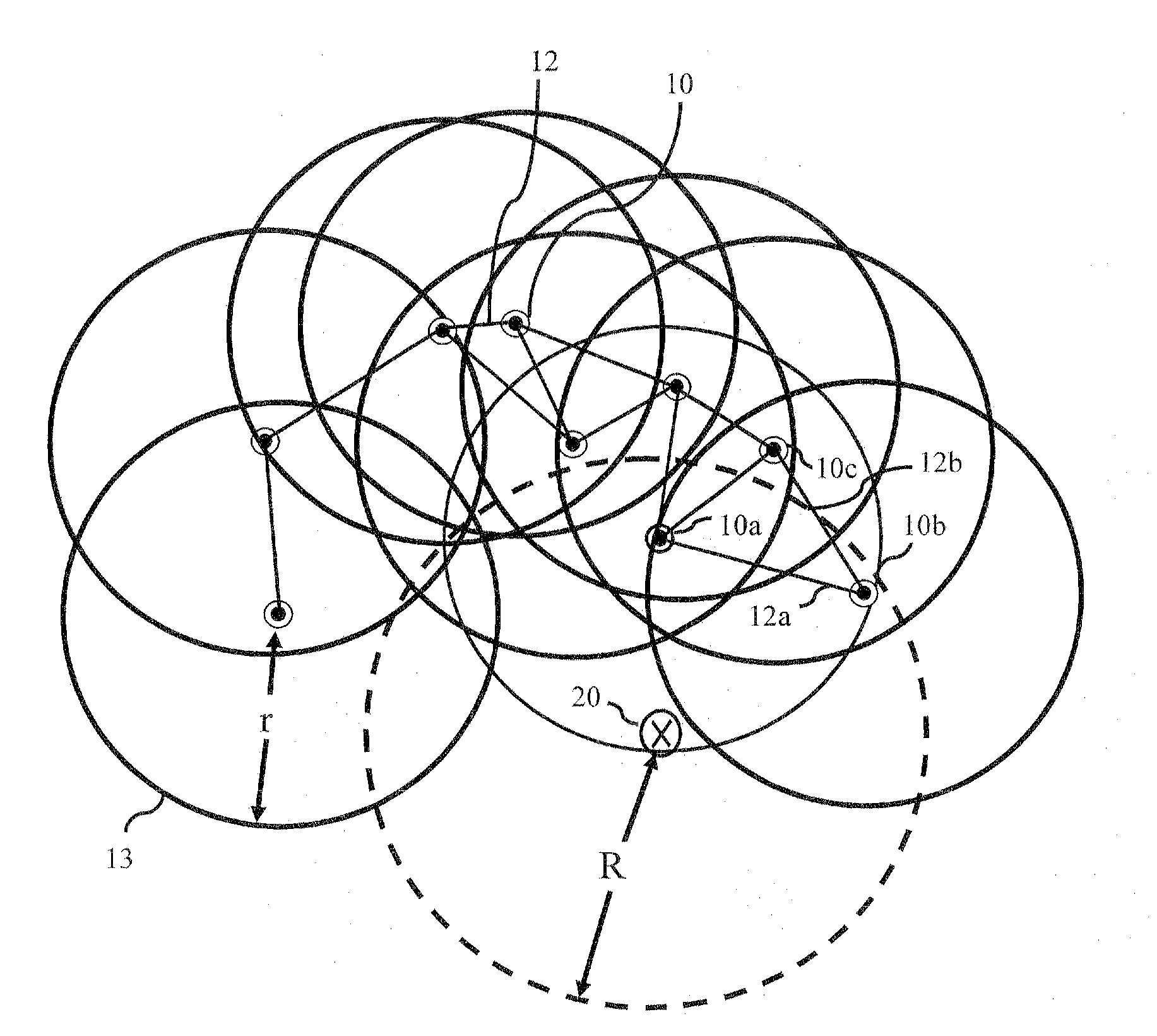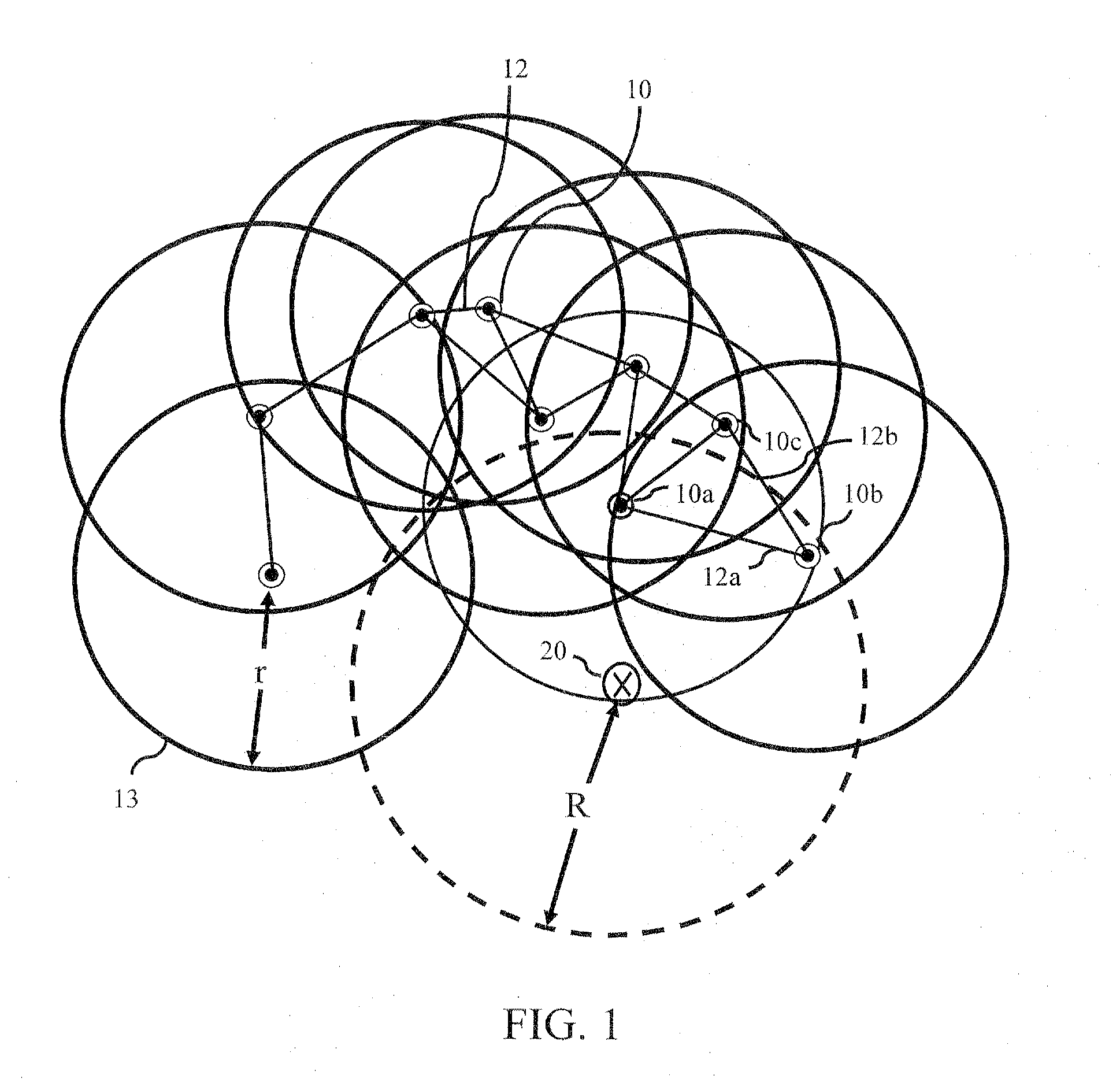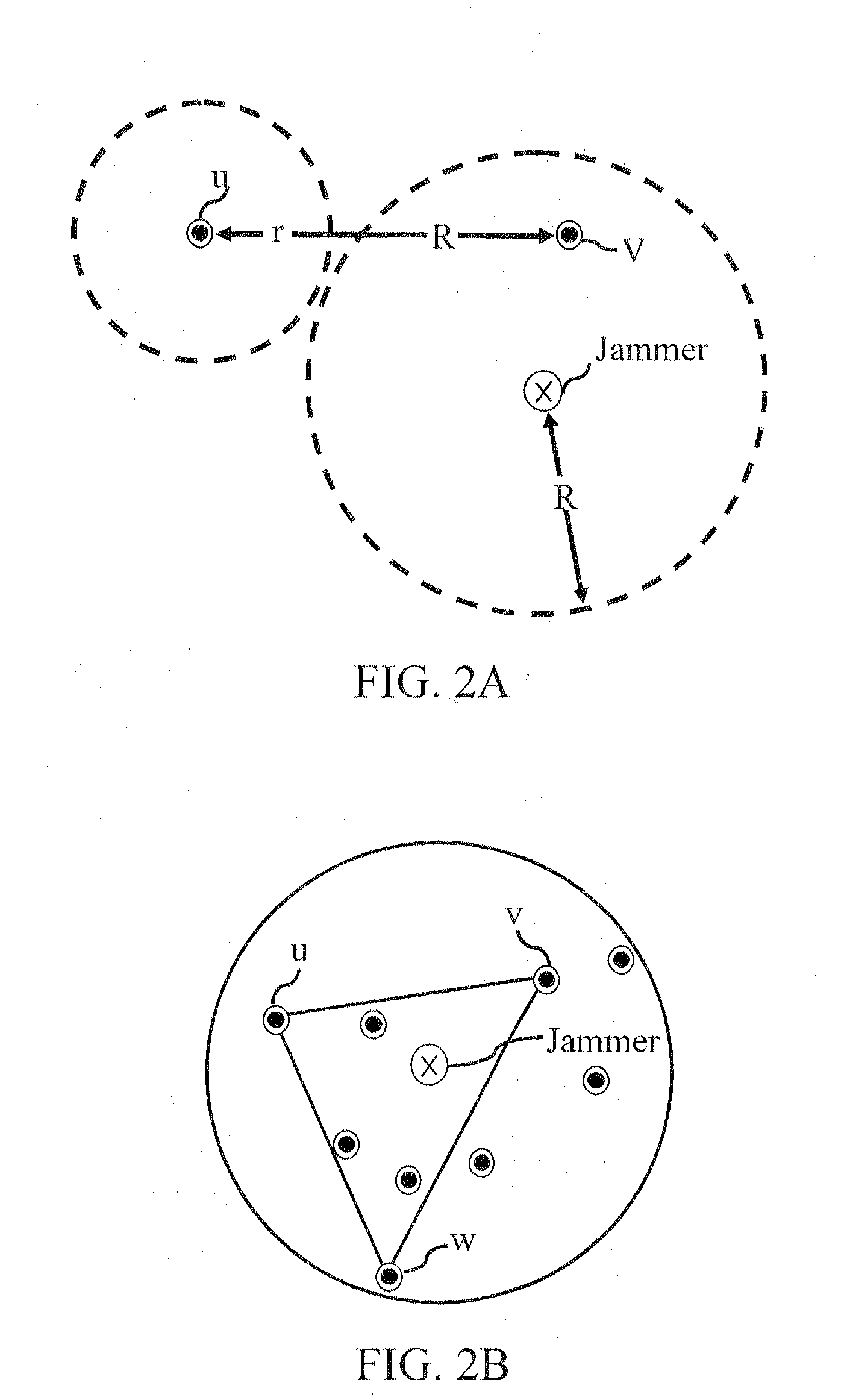Efficient protocols against sophisticated reactive jamming attacks
- Summary
- Abstract
- Description
- Claims
- Application Information
AI Technical Summary
Benefits of technology
Problems solved by technology
Method used
Image
Examples
Embodiment Construction
[0032]Embodiments of the invention provide methods and systems for wireless sensor network (WSN) security, and in particular, security from jamming attacks. A reactive jamming attack, where a jammer node disrupts the message delivery of its neighboring sensor nodes with interference signals, has become a critical threat to WSNs. Certain embodiments of the subject invention provide solutions against such a reactive jamming attack and are capable of addressing other reactive variants of attacks.
[0033]An embodiment of the subject invention mitigates attacks by focusing on localized identification of trigger nodes (nodes whose transmissions invoke the jammer nodes) and then inhibiting these identified trigger nodes from transmitting. According to one implementation, identified trigger nodes are assigned to be receivers in the subject routing scheme, thereby constraining the trigger nodes and avoiding invoking the jammers. Specifically, a routing algorithm is constructed in which the tri...
PUM
 Login to View More
Login to View More Abstract
Description
Claims
Application Information
 Login to View More
Login to View More - R&D
- Intellectual Property
- Life Sciences
- Materials
- Tech Scout
- Unparalleled Data Quality
- Higher Quality Content
- 60% Fewer Hallucinations
Browse by: Latest US Patents, China's latest patents, Technical Efficacy Thesaurus, Application Domain, Technology Topic, Popular Technical Reports.
© 2025 PatSnap. All rights reserved.Legal|Privacy policy|Modern Slavery Act Transparency Statement|Sitemap|About US| Contact US: help@patsnap.com



